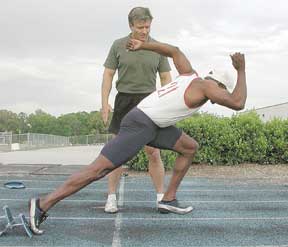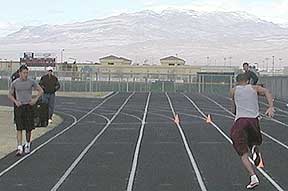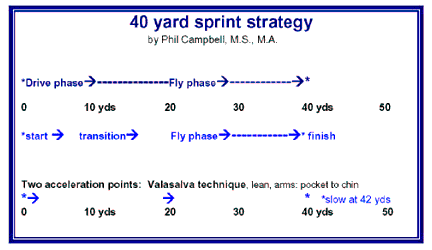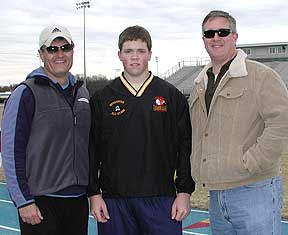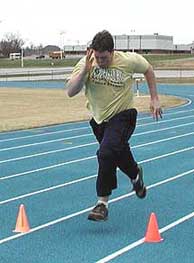Questions
How to run a faster 40 here
40 Speed.com Workouts download here
How do I increase stride length here
What is the VALSALVA MANEUVER here
What are ins and outs here
Do the combines predict success of the football field,
new research says yes here
How should endurance athletes improve endurance here
Why you don't want to use steroids - here
Sample Track & Field workouts here
How long are the Speed for Sports training sessions? 1.5 hours
Why is proprioception so important here
How do I treat hamstring injuries here
News release to promote a locally sponsored Speed Camp here
How to start from blocks here
How can I run 40 yards faster?
Speed for Sports uses the following Pro-combine sprint performance
improvement model. Average gains in the 40 during one training session
a week for four weeks (with four 10-minute stretching homework assignments)
is .5 seconds.
Two
acceleration points
in the 40.
At the blast-out "combine start" and first entering the fly
phase at the 20 yard point
"ins
& outs" drill teaches:
- acceleration technique
- mental focus & preparation
- power lean technique
- VALSALVA breathing
- power arm action
- hands
move pocket to chin slightly toward the center to maximize hip
rotation.
|
|
|
Phil
Campbell offers a free fitness improvement newsletter at: www.readysetgofitness.com
"Great newsletter!! Another reason why people who have exercised hard (anaerobically) since their 20's or 30's look much younger in their 40's - 60's! Also, those that start this type of exercise later in life make themselves look and feel younger than their peers that do not exercise. Keep sending these great newsletters!!" - Dr. Michael Hartle, Chairman, USA Powerlifting Sports Medicine Committee
10-Minute Stretching Routine
1. Hamstring Stretch
2. Torso Twist
3. Hamstring Leg Raise Stretch
4. Split-leg Stretch
5. Achilles/Calf Stretch
Sports Speed coach
featured in national magazines
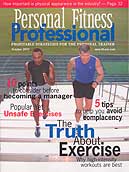
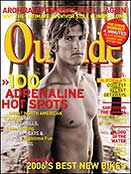
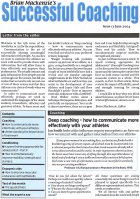
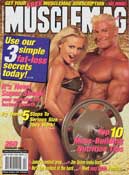
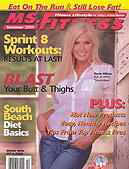
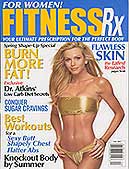
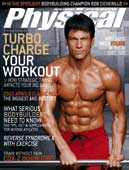
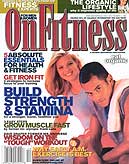
Phil Campbell highly recommends the Dave Ellis Fueling Tactics Sports
Nutrition System at
Fuelingtactics®
-
teaching strategies to help athletes outwork the competition.
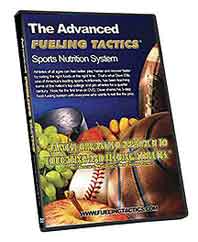
What are "INS & OUTS"
"Ins and Outs" is a fundamental speed development drill that teaches acceleration and breathing skills necessary for optimal speed.
Drill description; mark a course 40 yds long and divide into equal 10 yd segments.
Each "In" is an acceleration push that is followed by an "out," which is relaxing (while running fast), taking some sips of air, and coasting off the previous acceleration push.
IN = With a standing start, stride to the first mark. When the athlete hits the 10 yd mark, with maximum acceleration, exert maximum force and speed while holding the breath through the first "in phase".
OUT =
After the "in," slightly coast (relax while running fast) and
breathe while maintaining speed through "out" section. Once
the athlete hits the next mark (acceleration POINT), this is followed
by another "in" acceleration push.
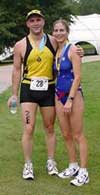 |
“I
have read every book on training for triathlons, but it was
not until I started doing this program that I started to reach my
full potential as an age-group triathlete.” Dr. Tim Berry, family physician, and Dr. Debra Berry, pediatrician, after a triathlon |
"I
am primarily
a distance runner and I want to run the Boston Marathon, but I have not
made the qualifying time. The sprint workouts have helped my distance
speed. I was surprised that it took only a few workouts
to see a difference. I am convinced that I will have a qualifying
time for the Boston Marathon. My quads got very fatigued during my last
marathon, and I believe the added strength and running speed resulting
from the sprint workouts will take care of that problem."
- Joe Judkins, President, Oak Ridge Running Club
Use the "VALSALVA MANEUVER" at Acceleration points
When the breath is held, certain physiological changes automatically position the body for enhanced speed. This is called the "Valsalva Maneuver." It is created by holding the breath briefly during acceleration.
The body goes into the fight or flight mode and there is an increase in blood pressure in the carotid artery. Chest cavity and abdominal pressure are increased. The body's sensors are turned on improving the athletes awareness. Holding the breath briefly provides many advantages to the athlete when exploding to avoid a tackle, steal second, beat an opponent to the hoop, or get to the soccer ball first.
Physical Characteristics That Predict Functional Performance in Division
I College Football Players
Davis, 2004,
Journal of Strength and Conditioning Research: Vol. 18, No. 1, pp. 115–120-
Strength and conditioning professionals who work with collegiate football players focus much of their time and effort on developing programs to enhance athletic performance. Although there has been much speculation, there is little scientific evidence to suggest which combination of physical characteristics best predicts athletic performance in this population. The purpose of this investigation was to examine the relationship among 6 physical characteristics and 3 functional measures in college football players. Data were gathered on 46 NCAA Division I college football players. The 3 response variables were 36.6-m sprint, 18.3-m shuttle run, and vertical jump. The 6 regressor variables were height, weight, percentage of body fat, hamstring length, bench press, and hang clean. A stepwise multiple regression analysis was performed to screen for variables that predict physical performance. Regression analysis revealed clear prediction models for the 36.6-m (40 yards) sprint and 18.3-m shuttle run. The results of this investigation will help strength and conditioning specialists better understand the variables that predict athletic performance in Division I college football players.
How do you treat hamstring injuries, click here.
How do I increase the length of my stride?
Several factors
involved. First, Body composition - The less lean, the shorter
stride length.
Strength and Power - Maximum strength contributes to joint stabilization at high velocities which aids in elastic strength expression.
Elasticity (Flexibility in motion) - Recently, a researcher found in a drop jump that muscle actually shortened a small amount as the whole system lengthened. This implies that connective tissue is the elastic part of the system. This means that max strength is even more important. The muscle is almost static so ATP is not required. Thus the energy cost in elastic force production is very low.
The elastic
component supports the contractile component for force production and
when utilized, contributes to much longer stride lengths. The ability
to anticipate the need for force production is important in elastic force
production
Neuromuscular Sequencing - The specific sequential firing order of the muscles involved is essential. The anticipation of the forthcoming action and the sending of the proper message to the brain to fire the muscles.
Dynamic Mobility - The ability to move a limb segment through a greater range of motion in the same time or a prescribed range in a shorter time.
THE LENGTH-FREQUENCY RELATIONSHIP
Stride Frequency
is the larger limiting factor in speed performance. Researcher Mann points
out that most better sprinters improve their performance through improved
stride rate.
Both Length and Frequency are improved by increasing leg strength which results in necessary ground force production more quickly.
Conclusion: Stride length can be limited by lack of flexibility and leg strength.
Ross Dunton, DUNTON SPORTS MANAGEMENT has full discussions about this topic on-line at www.coachr.org
Training Tip for Distance Runners
By George Payan (From Ross Dunton's Newsletter)
What I observed in runners I trained was the jump from 6 to 7 miles a day, produced the biggest jump in fitness level and the largest drop in racing times. After achieving and sustaining 7 miles a day, the gains above (8 or 9, for instance) were not as pronounced. My suspicion is that somewhere between 6 and 7 miles per day, there is a threshold achieved that maximizes the benefit to oxygen uptake.
How
should endurance athletes improve endurance?
New research
study reports how.
A study was conducted to investigate the effects of short-term, high-intensity sprint training on the performance of trained cyclists when performed with endurance training. Seventeen trained cyclists were randomly assigned to a sprint training. Sprint training was performed biweekly for four weeks, comprising a total of 28 min over the training period.
In conclusion,
these data suggest that four weeks of high-intensity sprint training combined
with endurance training in a trained cycling population increased motor
unit activation, exercising plasma lactate levels, and total work output
with a relatively low volume of sprint exercise compared to endurance
training alone.
("Neural, Metabolic, and Performance Adaptations
to Four Weeks of High Intensity Sprint-Interval Training in Trained Cyclists,"
2004, Creer, International Journal of Sports Medicine; 92-98)
Starting from Blocks
by
Ross Dunton, Dunton Sports Management
email: coachr880@bellsouth.net
THE BLOCK START
1) Used to put the
sprinter in a better position to accelerate
a) Determine quick side for placement of foot in back block
b) Determine block position
(1) 2 foot lengths from line to front block and another foot length between
front and rear block
(2) .55 x leg length for front block distance and .42 x leg length for
distance between blocks
(3) Distance from tibial tubercle to the toe when foot is in complete
plantar flexion - front block, 1-1 V2 foot lengths for distance between
blocks
c) Psycho-Physiological preparation preceding entering of blocks
(1) Pre-setting the neuromuscular system by preparatory movements
(a) Explosive vertical jumps
(b) 4-5 practice starts (research supports fact that the 5th -6th effort
comes closest to maximal)
(c) Use of a motor set rather than a sensory set to reduce reaction time
"On your marks"
(1) Toes or ball
of foot in contact with the track and firmly against the pedals of the
block
(2) Arms with thumbs directly under shoulders and equidistant from the
saggital mid-line of the body
(a) Maximizes distance of shoulders from the ground
(b) Keeps weight distributed evenly so as to not overload on the quick
side
(3) Fingers and hands form a high bridge thus increasing shoulder to ground
distance
(4) Shoulders directly over hands (saggital view) to eliminate hip movement
forward and upward on set command
(5) Quick side
(rear) knee in contact with the ground (both knees down puts shoulders
ahead of hands and increases strength demand as well as introducing imbalance)
(6) Head aligned so neck and back of head become linear extension of the
spine
"Set"
(1) Power side (front)
knee is approximately 90 degrees
(2) Angles less than 90 correlate with low power production
(3) Muscle tension applying force against the block
(4) Quick side (rear) knee is approximately 120 degrees
(a) Highly efficient angle for knee extension
(b) Force application should come from gluts and hamstrings - pretension
desired
(c) Pretension of the involved muscles minimizes movement time and eliminates
a conscious pushing with the rear leg at the gun
(5) Shoulders above the hands
(a) Position depends on sprinter's arm/shoulder strength
(b) Deviation forward or back will effect the distance between the front
ankle and the hip as measured along the track surface
i) Effects force application and therefore acceleration
(6) Hips above the shoulders
(a) Manipulation of this variable will affect angles' at the knee and
hip, as well as ankle to hip distance
(7) Shins parallel and at a low angle with ankle behind knee
(a) The angle of the front shin should determine the body's projection
angle in the first step
(8) The horizontal distance between the ankle and the hip is probably
the most critical factor to evaluate
(a) Within limits, the greater this distance, the potentially more efficient
will be the acceleration
(b) Within limits, the greater this distance, the shorter must be the
ground contact time and the time to apply force
(c) When this distance is small, the ability to apply force to overcome
the body's inertia is poor.
(9) Cue a motor set to focus upon
(a) A motor
set means to have the athlete focus upon their first movement, not the
gun
"Go"
(1) Extension of
the quick side arm to contribute to force production on the power leg
(a) Press-pressure on the rear block
(b) Push-pressure on the front block
(2) Power side arm moves virtually simultaneously with quick side arm
(3) Work to extend both thighs at the hip simultaneously to propel C of
M forward
(a) Force must come from gluts and hamstrings to create hip extension
(b) Quadriceps extension is timed so as to leave the shin angle unchanged
and thus contribute to movement of the C of M forward
i) Keep C of M moving in same path initiated by gluts and hamstrings forward
and slightly upward
(4) Once the quick side leg has reached optimal extension, it is recovered
(a) Thigh flexed at hip
(b) Small degree of flexion at knee
i) Only flexed to degree necessary to keep shin angle just slightly greater
than the previous contact
ii) Heel to butt usually results in too large a shin angle on the next
contact resulting in poor force application for acceleration
(c) Foot dorsiflexion
i) Places the ankle joint in a mechanically advantageous position for
the next ground contact
ii) Pre-sets muscles used in plantar and dorsiflexion to create a rigid
ankle for elastic force production essential for short ground contact
time required by the horizontal distance between ankle and hip
(d) If recovery comes too late:
i) Range of motion of the swinging thigh will be shortened resulting in
loss of negative foot speed on ground contact in the next step
ii) OR greater vertical forces will be generated to allow time for the
thigh to complete the full range allowing movement to be complete but
sacrifices stride frequency
(e) If recovery is too soon, the amount of force applied to the block
is much less than optimal
(f) The thigh should be abruptly decelerated at the time of optimal extension
of the hip and knee of the power side
Departure
(1) Even in the first
flight phase the athlete should be airborne, not walking from the blocks
(2) Each successive stride is a modification of the previous stride
(a) Changes that occur as a result of increasing velocities and decreasing
acceleration values
i) Ankle-hip distance is progressively reduced
ii) Shin angles increase
iii) The importance of generating negative foot speed increases
iv) Backside mechanics give way gradually in importance to frontside mechanics
v) The pattern of foot placement increases in regular progression with
each step longer than the previous.
(The initial increment is 10-20 centimeters and increases with acceleration)
i) Ground contact time decreases
Why you don't want to use steroids
An Athlete's Dangerous Experiment
By
Jere Longman, The New York Times
PLANO, Tex., Nov. 25 — After recording one save last season, Taylor Hooton expected to join the starting rotation next spring for the baseball team at Plano West Senior High School.
"You could count on the kid to throw strikes," said Billy Ajello, Taylor's best friend and a catcher at Plano West, which is located amid the affluent sprawl north of Dallas.
By all accounts, Taylor was popular and ebullient. He was a cousin of Burt Hooton, the former major league pitcher, and his brother pitched in college. Next spring, he would make his own mark during his senior season. But on July 15, a month past his 17th birthday, Taylor Hooton killed himself. The authorities ruled the death a suicide by hanging.
His parents and a doctor familiar with the case said they believe that Taylor's death was related to depression that he felt upon discontinuing the use of anabolic steroids. The sense of euphoria and aggression that accompany the use of steroids can be replaced by lethargy, loss of confidence, melancholy and hopelessness when a person stops using performance-enhancing drugs, doctors said.
"It's a pretty strong case that he was withdrawing from steroids and his suicide was directly related to that," said Dr. Larry W. Gibbons, president and medical director of the Cooper Aerobics Center, a leading preventive medicine clinic in Dallas. "This is a kid who was well liked, had a lot good friends, no serious emotional problems. He had a bright future."
Taylor Hooton's example is extreme, but the use of steroids by athletes and nonathletes in high school is considered even more troubling than the use of them by elite athletes who are involved in widely publicized scandals in sports like football, baseball and track and field, a number of doctors said.
While there are relatively few professional athletes, some doctors estimate that 500,000 to one million high school students, or more, use steroids. Adolescents are also more susceptible to some physiological dangers, including premature cessation of bone growth, which can limit a person's height, doctors said.
By nature, teenagers are risk takers, and they are less likely to understand the health risks or to be concerned with potential side effects like infertility, atrophied testicles, high blood pressure, liver damage and prostate cancer, some of which may not appear for 20 or 30 years, doctors said.
Anabolic Steroids May Lead to Violence
BOSTON (UPI) -- Anabolic steroids may have long-term effects on players' behavior and aggression long after they stop abusing the performance enhancing drugs. Northeastern University psychology professor Richard Melloni, with funding from the National Institutes of Health, recently found evidence that long after steroid use ends it can produce long-term aggression, the university said Friday. Melloni has been studying how steroids used during adolescence may permanently alter the brain's ability to produce serotonin. Adolescent Syrian hamsters, given their similar brain circuitry to human adolescents, were administered doses of anabolic steroids and then measured for aggressiveness over certain periods of time.
The researchers initially
hypothesized steroid use during adolescence might permanently alter
the brain's chemistry and a person's tendency toward aggression long
after use has stopped. Their most recent findings, published this week
in Hormones and Behavior, enabled them to confirm this hypothesis and
conclude there is indeed a lengthy price -- namely long-term aggression
-- to pay for drug abuse even after the ingestion of steroids ceases.
"We know testosterone or steroids affect the development of serotonin
nerve cells, which, in turn, decreases serotonin availability in the brain,"
Melloni says.
Study
Summary
KINEMATIC DETERMINANTS OF EARLY ACCELERATION IN FIELD SPORT ATHLETES
(Murphy,
2003, Journal of Sports Science and Medicine 2, 144-150)
Acceleration performance is important for athletes that need repeat sprint ability. Although acceleration is widely trained for, there is little evidence outlining the key factors. The aim of this study was to determine the kinematic differences between individuals with fast and slow acceleration.
Twenty athletes were tested and filmed for sprint ability over the first three steps of a 15m sprint and classified as fast or slow.
Results: The fast group had significantly lower (11-13%) left and right foot contact times, increased stride frequency and better knee extension. There was no difference found in stride length.
Conclusion: Athletes who are naturally fast in early acceleration achieve this through "reduced ground contact times resulting in an improved stride frequency." Training for improved acceleration should be directed towards using coaching instructions and drills that specifically train such movement adaptations.
What is proprioception? This is a physical therapy rehab term used
to describe the awareness of how the position of a joint. Someone recovering
from knee replacement surgery has to build back the muscle around the
knee and build back the middle-ear balance from not using the knee for
a few weeks. Technically, proprioception (pro'pre-sep'shn) is the feeling
linked to cues from within the body. The cues help one to know the positions
of body parts and the motions of the muscles and joints
(Mosby's
Medical Encyclopedia).
Propriception has a sports training application. Nerve endings in muscle and tendons are constantly sending and receiving signals to and from the brain that determine when and how far to activate muscle fiber. If an athlete injures an ankle, not only does the athlete need to rehabilitate the ankles, but also the proprioceptors, so the balance with the joint comes into play.
When learning the acceleration position, which is a hard learn forward from the ankles, it require time and conditioning of the middle-ear, nerve endings in the body, and the central nervous system (proprioceptors) to give the athlete a since of balance.
Short film of Phil Campbell running a 200 meter race in the 2003 State Games here
For more information about Speed Camp
Contact:
kathy@40speed.com
www.40speed.com
